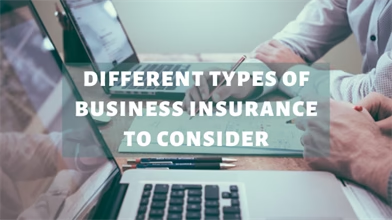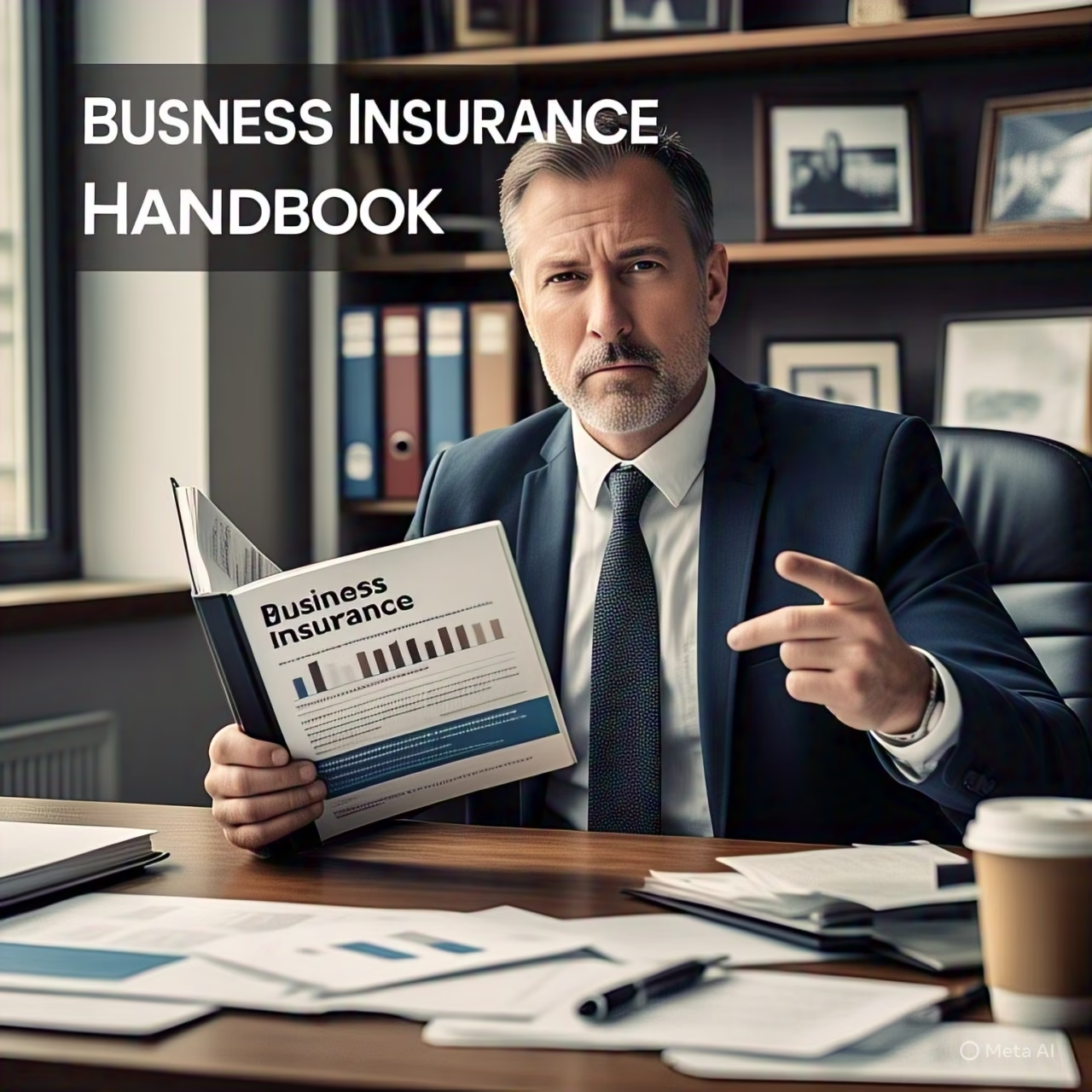Did you know 40% of small businesses face lawsuits at some point? Even a single customer slip-and-fall accident could cost over $30,000 in legal fees. Without proper safeguards, unexpected claims might drain your finances or force you to close.
Liability coverage acts like a shield for your company. It handles expenses tied to bodily injuries, property damage, or personal injury claims. Think of it as backup for scenarios like a client tripping in your store or accidental damage during a service call.
While not always legally required, this type of policy helps keep your assets secure. Reputable providers like The Hartford emphasize tailored plans to match your industry’s risks. A well-chosen plan doesn’t just cover accidents—it builds confidence with clients who know you’re prepared.
Imagine a coffee shop facing a lawsuit after a customer burns themselves. Without coverage, legal battles could wipe out profits. With the right policy, you focus on growth instead of “what-ifs.”
Key Takeaways
- Liability coverage handles injury, property damage, and personal injury claims.
- It safeguards your assets even if lawsuits arise unexpectedly.
- Customizable policies adapt to your industry’s unique risks.
- Many clients prefer working with insured businesses for added trust.
- Proper selection prevents financial strain from legal costs.
Understanding Liability Insurance and Its Benefits
Imagine losing everything overnight because of one accident. A client’s injury or damaged equipment could put your savings at risk. That’s where smart planning comes in.
What Does Business Liability Insurance Cover?
This protection handles bills if someone gets hurt at your workplace or you accidentally break a client’s property. For example, if a delivery person slips on your wet floor, their medical bills get covered. It also steps in when you’re accused of mistakes like false advertising.
Shielding Your Resources
Your tools, savings, and property stay safer when claims arise. Without this backup, you might pay legal fees from your own pocket. A local bakery owner once shared:
“Our policy covered a $15,000 settlement when a customer choked on a cookie. We stayed open because we weren’t drained financially.”
| Situation | Without Coverage | With Coverage |
|---|---|---|
| Customer injury | $20k out-of-pocket | $0 deductible |
| Property damage | Repair costs | Full replacement |
| Legal defense | $150/hour lawyer | Firm handles fees |
Some industries face higher risks. Contractors need protection from worksite accidents, while consultants guard against advice-related disputes. Tailored plans matter—a coffee shop’s needs differ from a tech startup’s.
Exploring the Importance of Liability Insurance
What would happen if a client sued your business tomorrow? Even minor incidents—like spilled coffee damaging a laptop—can spiral into costly disputes. The Hartford reports that 52% of small companies face at least one claim within their first five years, often from simple oversights.
Smart safeguards keep your operations running smoothly when challenges arise. For example, a graphic designer accidentally uses copyrighted images. Without protection, legal fees alone could exceed $25,000. With the right plan, you address issues without draining cash reserves.
Critical Reasons to Prioritize Safeguards
Consider these scenarios where preparation makes all the difference:
| Situation | Unprotected Cost | Protected Outcome |
|---|---|---|
| Customer injury at your office | $45,000 settlement | $500 deductible |
| Damaged client property | Full replacement | Policy covers repairs |
| Advertising error lawsuit | $300/hour attorney | Legal team included |
A restaurant owner recently told us:
“Our policy handled a $12,000 medical bill when a diner had an allergic reaction. We kept our doors open because we planned ahead.”
Three key advantages stand out:
- Avoids financial freefall from unexpected claims
- Covers treatment costs if someone gets hurt
- Builds credibility with clients and partners
Choosing suitable protection isn’t about fear—it’s about empowering your business to handle surprises confidently.
Key Components of Liability Insurance Policies
Every policy has core elements that work together like puzzle pieces to defend your business. Let’s break down what’s typically included and why each part matters.
Bodily Injury and Property Damage Coverage
This foundation handles claims if someone gets hurt at your workplace or you accidentally damage their belongings. Picture a client tripping over loose cables during a meeting. Their medical bills and any related lawsuits would fall under this protection.
Medical Expenses and Legal Cost Coverage
Even minor incidents can lead to big bills. Policies often include automatic payment for immediate treatment costs, like ambulance fees. Legal defense gets covered too—whether you settle out of court or go to trial.
| Scenario | Typical Coverage | Policy Limits Example |
|---|---|---|
| Broken arm at retail store | Up to $50,000 medical | $1M per incident |
| Water damage to office equipment | Full repair costs | $500k aggregate |
| Defamation lawsuit | Attorney fees + settlements | Varies by plan |
A boutique owner shared:
“When a dress rack fell on a customer, our policy covered her ER visit and physical therapy. We paid nothing beyond our deductible.”
Always review your coverage limits—the maximum your plan pays per claim or year. Higher-risk businesses might need increased protection. Work with your agent to match these numbers to your actual exposure.
When Liability Insurance is Essential for Your Business
Have you ever signed a contract that made your head spin? Many agreements—from office leases to client projects—require proof of protection before you can start work. Let’s explore situations where this safeguard isn’t just smart—it’s non-negotiable.
Contract Requirements and Leasing Considerations
Landlords often demand proof of coverage before handing over keys. One café owner shared:
“Our lease required $2 million in protection. Without it, we couldn’t secure our dream location.”
Client contracts frequently include similar clauses. Tech companies might need cyber liability add-ons, while contractors face bonding requirements. Check these three common scenarios:
| Situation | Without Coverage | With Coverage |
|---|---|---|
| Retail lease signing | Rejected application | Approved immediately |
| Government contract bid | Disqualified | Eligible for project |
| Equipment rental | $5k security deposit | Waived fees |
Operational Risks That Demand Protection
Your daily activities contain hidden dangers. A bakery faced $28k in medical bills when a customer slipped on a wet floor—their policy covered every dollar. Three risks often overlooked:
- Employees using machinery: Workers’ comp becomes crucial
- Consultants giving advice: Errors & omissions coverage applies
- Delivery drivers: Auto liability protects against accidents
Even home-based ventures need protection. A graphic designer paid $0 out-of-pocket when a client sued over missed deadlines—their professional services policy handled legal fees. Don’t let everyday operations become financial landmines.
Types of Liability Insurance for Business Owners
Running a business means facing unpredictable risks every day. Choosing the right protection starts with understanding your options. Let’s explore coverage types that match different operational needs.
General Liability Insurance Overview
This foundational policy covers common accidents like customer injuries or property damage. If a visitor slips in your store, general liability handles medical bills and legal fees. It’s ideal for brick-and-mortar shops, contractors, and service providers.
Specialized Policies: Professional, Product, and Umbrella Coverage
Service-based businesses need professional liability insurance for advice-related claims. Imagine a client suing over financial losses from your consulting recommendations. This policy covers settlements and defense costs.
| Policy Type | Best For | Coverage Example | When to Consider |
|---|---|---|---|
| Product Liability | Manufacturers | Defective item injuries | Selling physical goods |
| Umbrella | High-risk industries | Claims exceeding primary limits | $1M+ lawsuits |
| Professional Liability | Consultants | Errors in services | Contract-based work |
A tech startup owner shared:
“Our umbrella policy covered a $2.1M lawsuit when a software bug caused client data loss. Without it, we’d have closed permanently.”
Product-based companies often combine general liability with product-specific coverage. Service providers add professional protection. High-net-worth businesses use umbrella policies as extra safety nets. Match your choices to your daily risks.
Assessing Coverage Limits and Policy Details
What if three customers filed claims against your business in one year? Policy limits determine whether you’re fully protected or left covering gaps. Let’s unpack how to evaluate these numbers before signing any agreement.

Evaluating Occurrence and Aggregate Limits
Per-occurrence limits cap what your policy pays for a single incident. If a client’s laptop gets damaged during a service call, this number defines your maximum payout. Aggregate limits set the annual total across all claims. Imagine multiple slip-and-fall incidents at your store—this limit could save you from financial disaster.
| Scenario | Occurrence Limit | Aggregate Limit |
|---|---|---|
| Landscaper damages two client patios | $500k per incident | $1M yearly total |
| Consultant faces three negligence claims | $300k per claim | $900k annual cap |
A bakery owner shared:
“We used our aggregate limit when three customers reported food poisoning. The policy covered all medical bills without draining our savings.”
Three factors to review:
- Typical claim amounts in your industry
- Potential for multiple incidents in one year
- Exclusions for specific risks like intentional negligence
Always match your limits to worst-case scenarios. A $1M aggregate limit might sound sufficient—until five claims arise. Work with your agent to stress-test these numbers against real-world situations.
Integrating Liability Coverage with Overall Business Risk Management
How prepared is your business for unexpected incidents? Merging your protection plan with daily operations creates a safety net that adapts as you grow. Let’s explore practical ways to align your safeguards with real-world challenges.
Preventive Measures and Safety Protocols
Reducing accidents starts with proactive steps. Regular equipment checks, employee training, and clear signage cut claim risks significantly. A restaurant owner shared:
“After implementing monthly safety audits, our slip-and-fall incidents dropped by 70% last year.”
Three strategies to consider:
- Document all safety procedures for consistent implementation
- Use checklists to verify compliance during inspections
- Train staff quarterly on emergency response protocols
Bundling Insurance Policies for Better Protection
Combining multiple safeguards often lowers costs while expanding protection. Many providers offer discounts when you bundle general liability with property or cyber policies. Review this comparison:
| Policy Bundle | Average Savings | Added Benefits |
|---|---|---|
| General + Property | 15% | Equipment replacement |
| Professional + Cyber | 20% | Data breach support |
Key tip: Gather quotes from 3+ providers before bundling. Compare coverage limits and exclusions—cheaper isn’t always better. A tech firm saved $4,200 annually by merging policies while doubling their aggregate limits.
Regularly reassess your risk management approach. Update safety measures as operations evolve, and adjust your coverage to match new services or locations. This dynamic strategy keeps your business resilient through every phase.
Understanding Liability Insurance Beyond Business: Personal and Homeowners’ Perspectives
What if a neighbor’s injury at your barbecue led to losing your savings? Liability protection isn’t just for workplaces—it shields your home and personal assets too. While businesses face risks like customer injuries, homeowners deal with unique dangers like dog bites or swimming pool accidents.

Personal Liability vs. Business Liability Insurance
Your company’s policy covers client slips or damaged equipment. Homeowners’ protection handles incidents on your property, like a mail carrier tripping on icy steps. Both address legal costs, but their focus differs:
| Coverage Type | Business Policy | Homeowners’ Policy |
|---|---|---|
| Injuries | Clients/visitors | Guests/service workers |
| Property Damage | Accidental harm to client goods | Tree falling on neighbor’s garage |
| Legal Limits | Higher ($1M+ common) | Lower ($300k average) |
A realtor shared:
“My business policy covered a client’s broken ankle during a showing. But when my dog nipped a friend at home, homeowners’ protection handled those bills.”
The Role of Liability Coverage in Homeowners Policies
Your standard home insurance includes liability safeguards, but high-risk features like trampolines might require extra protection. Umbrella policies add $1M+ coverage for severe incidents. Consider these stats:
- 18% of homeowners’ claims involve pet-related injuries
- Pool accidents account for 7% of personal lawsuits
- Average slip-and-fall settlement: $30,000
One family avoided financial ruin when their policy covered a $85,000 lawsuit after a tree branch damaged a neighbor’s car. Like your company, your residence needs tailored safeguards against life’s surprises.
Conclusion
Ever wondered what separates thriving businesses from those derailed by unexpected events? The right liability coverage acts as both shield and strategy. Whether handling customer injuries or property damage claims, your policy becomes the backbone of financial stability.
Review coverage limits carefully—they determine whether you’re fully protected during multiple incidents. Specialized options like professional liability or umbrella policies fill gaps that general plans might miss. Bundling safeguards often cuts costs while expanding protection.
Your business operations gain resilience when insurance integrates with safety protocols and staff training. From medical expenses to legal defense, proper planning keeps cash flow steady. Even home-based ventures benefit from tailored solutions addressing unique risks.
Use this guide to assess your needs—compare policy types, verify claim processes, and consult trusted providers. With smart safeguards in place, you’ll face challenges knowing your assets and reputation stay secure. Now’s the time to build coverage that grows alongside your ambitions.
FAQ
What’s the difference between general and professional liability coverage?
General liability protects against physical risks like customer injuries or property damage at your workplace. Professional liability (errors and omissions) covers financial losses from mistakes in services or advice, such as a missed project deadline or accounting error.
Does a homeowners policy include liability protection for home-based businesses?
Most standard homeowners policies, like those from State Farm or Allstate, don’t cover business-related claims. You’ll need separate commercial coverage if clients visit your home or you store business equipment there.
How do workers’ compensation and liability policies work together?
Workers’ comp covers employee injuries and lost wages, while liability insurance handles third-party claims. For example, if a customer slips in your store, liability pays their medical bills. If an employee gets hurt, workers’ comp applies.
Can umbrella policies increase my coverage limits affordably?
Yes. Companies like Liberty Mutual offer umbrella policies that add
FAQ
What’s the difference between general and professional liability coverage?
General liability protects against physical risks like customer injuries or property damage at your workplace. Professional liability (errors and omissions) covers financial losses from mistakes in services or advice, such as a missed project deadline or accounting error.
Does a homeowners policy include liability protection for home-based businesses?
Most standard homeowners policies, like those from State Farm or Allstate, don’t cover business-related claims. You’ll need separate commercial coverage if clients visit your home or you store business equipment there.
How do workers’ compensation and liability policies work together?
Workers’ comp covers employee injuries and lost wages, while liability insurance handles third-party claims. For example, if a customer slips in your store, liability pays their medical bills. If an employee gets hurt, workers’ comp applies.
Can umbrella policies increase my coverage limits affordably?
Yes. Companies like Liberty Mutual offer umbrella policies that add $1–5 million in extra protection beyond your base policy limits. This costs less than raising primary coverage and safeguards against severe lawsuits.
What operational risks make liability coverage essential?
Interacting with clients onsite, using subcontractors, or selling products creates exposure. Even a simple mistake, like a landscaper damaging a client’s irrigation system, could lead to costly repairs or legal fees without proper protection.
Are legal defense costs included in liability policies?
Most policies, including The Hartford’s plans, cover attorney fees, court costs, and settlements up to your limit—even if a claim is unfounded. This prevents out-of-pocket expenses during disputes.
How do occurrence and aggregate limits affect coverage?
Occurrence limits apply per incident (e.g., $500k per claim), while aggregate limits cap annual payouts (e.g., $1 million total). Balancing both ensures you’re protected against multiple claims in a single year.
Why do landlords or clients require certificates of insurance?
Proof of coverage, like a COI from Nationwide or Travelers, assures them you can pay for damages. Many commercial leases or contracts mandate specific limits, such as $2 million aggregate, to reduce their risk.
–5 million in extra protection beyond your base policy limits. This costs less than raising primary coverage and safeguards against severe lawsuits.
What operational risks make liability coverage essential?
Interacting with clients onsite, using subcontractors, or selling products creates exposure. Even a simple mistake, like a landscaper damaging a client’s irrigation system, could lead to costly repairs or legal fees without proper protection.
Are legal defense costs included in liability policies?
Most policies, including The Hartford’s plans, cover attorney fees, court costs, and settlements up to your limit—even if a claim is unfounded. This prevents out-of-pocket expenses during disputes.
How do occurrence and aggregate limits affect coverage?
Occurrence limits apply per incident (e.g., 0k per claim), while aggregate limits cap annual payouts (e.g.,
FAQ
What’s the difference between general and professional liability coverage?
General liability protects against physical risks like customer injuries or property damage at your workplace. Professional liability (errors and omissions) covers financial losses from mistakes in services or advice, such as a missed project deadline or accounting error.
Does a homeowners policy include liability protection for home-based businesses?
Most standard homeowners policies, like those from State Farm or Allstate, don’t cover business-related claims. You’ll need separate commercial coverage if clients visit your home or you store business equipment there.
How do workers’ compensation and liability policies work together?
Workers’ comp covers employee injuries and lost wages, while liability insurance handles third-party claims. For example, if a customer slips in your store, liability pays their medical bills. If an employee gets hurt, workers’ comp applies.
Can umbrella policies increase my coverage limits affordably?
Yes. Companies like Liberty Mutual offer umbrella policies that add $1–5 million in extra protection beyond your base policy limits. This costs less than raising primary coverage and safeguards against severe lawsuits.
What operational risks make liability coverage essential?
Interacting with clients onsite, using subcontractors, or selling products creates exposure. Even a simple mistake, like a landscaper damaging a client’s irrigation system, could lead to costly repairs or legal fees without proper protection.
Are legal defense costs included in liability policies?
Most policies, including The Hartford’s plans, cover attorney fees, court costs, and settlements up to your limit—even if a claim is unfounded. This prevents out-of-pocket expenses during disputes.
How do occurrence and aggregate limits affect coverage?
Occurrence limits apply per incident (e.g., $500k per claim), while aggregate limits cap annual payouts (e.g., $1 million total). Balancing both ensures you’re protected against multiple claims in a single year.
Why do landlords or clients require certificates of insurance?
Proof of coverage, like a COI from Nationwide or Travelers, assures them you can pay for damages. Many commercial leases or contracts mandate specific limits, such as $2 million aggregate, to reduce their risk.
million total). Balancing both ensures you’re protected against multiple claims in a single year.
Why do landlords or clients require certificates of insurance?
Proof of coverage, like a COI from Nationwide or Travelers, assures them you can pay for damages. Many commercial leases or contracts mandate specific limits, such as million aggregate, to reduce their risk.




